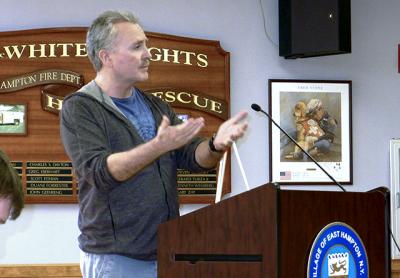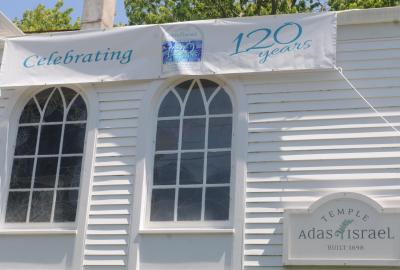Rally and March for Black Lives Matter
Rally and March for Black Lives Matter

Update, July 15, 2:30 p.m.: The Black Lives Matter demonstration in East Hampton Village will take place at Herrick Park on Newtown Lane, according to Police Chief Gerard Larsen, who met with an organizer on Friday morning. Participants will meet at noon, and at some point march over to Village Hall on Main Street, and then return to Herrick Park. The protest demonstration will last about three hours.
Originally, July 14, 6:39 p.m.: Two protest demonstrations are planned for the South Fork on Sunday in connection with the recent shooting deaths of black men at the hands of law enforcement elsewhere in the country. A Black Lives Matter rally is scheduled in East Hampton Village at noon. A community march and vigil in support of the Black Lives Matter movement and in memory of the two men who were killed earlier this month will take place in Bridgehampton, starting at 4:30 p.m.
"A lot of people kept calling and telling me we need to do this in East Hampton," said Vanessa Vascez-Corleone, who organized a peaceful Black Lives Matter protest in Riverhead and Riverside last week. She had planned to hold one in Hampton Bays this weekend, but after hearing from residents here, including an East Hampton attorney, she switched locations.
Between 100 and 200 people are expected in the village Sunday, she said. Participants will meet by Stop and Shop on Newtown Lane at noon and walk to Main Street, she said. The event should last about four hours.
Village Police Chief Gerard Larsen said Thursday afternoon that particulars were still unclear, but that he has sent another of the organizers an application for a permit and is meeting with her on Friday morning to go over details.
"She's going to show me what she wants to do. Then we'll make it all happen, as long as it's within reason. "I don't anticipate any problems," he said, noting that the protest in Riverhead had gone smoothly.
The chief anticipates that the last-minute permit won't be a problem, as it requires only the signature of Rebecca Molinaro, the village administrator. He has arranged for extra police officers to be on duty.
His job is to make sure everyone is safe, both participants and onlookers, he said. "I understand the issues that are going on in the country. I certainly believe people have the right to express their First Amendment right."
The Black Lives Matter movement campaigns against violence toward the black community. Recent events have prompted more rallies. Alton Sterling, a 37-year-old from Louisiana, was shot on July 5 by two officers as he lay on the ground, video showed, and Philando Castile, a 32-year-old, was shot during a traffic stop in Minnesota. The immediate aftermath of Mr. Castile's shooting played out on a Facebook video posted by his girlfriend.
Days later, during a rally in Dallas, a black veteran of Afghanistan shot and killed five white police officers. Nine others were wounded.
Holding multiple rallies, Ms. Vascez-Corleone said, was important to the movement. "We don't want to let the issue die down," she said. "We're looking for the chain effect. . . There's a lot of communities wanting to stand up. You can already see a chain effect happening."
After making plans for the demonstration in East Hampton, she learned of the march and vigil in Bridgehampton, which will begin at the Unitarian Universalist Congregation of the South Fork, 977 Sag Harbor Turnpike, at 4:30 p.m. The event's Facebook page encourages participants to bring signs. They will march up the turnpike to the Hampton Library on Main Street, where they will gather. Clergy will speak and poems will be read. Those who wish to attend but cannot make the march can meet the group at the library at 5:30.
The Bridgehampton gathering was born out of a movement already afoot. Canio's Cultural Cafe, an education nonprofit associated with Canio's Books in Sag Harbor, along with representatives from Temple Adas Israel in Sag Harbor and the Unitarian Universalist congregation, have been working together on community dialogues focusing on certain books, according to Maryann Calendrille, who owns Canio's with Kathryn Szoka. The group calls itself Racial Justice East End. On Sunday, at 3 p.m., members will meet at the Unitarian Universalist Congregation for the second of four discussions on "The New Jim Crow: Mass Incarceration in the Age of Colorblindness," by Michelle Alexander.
"Some folks thought it would be a good follow-on from the discussion, to get up and take a walk," Ms. Calendrille said.







